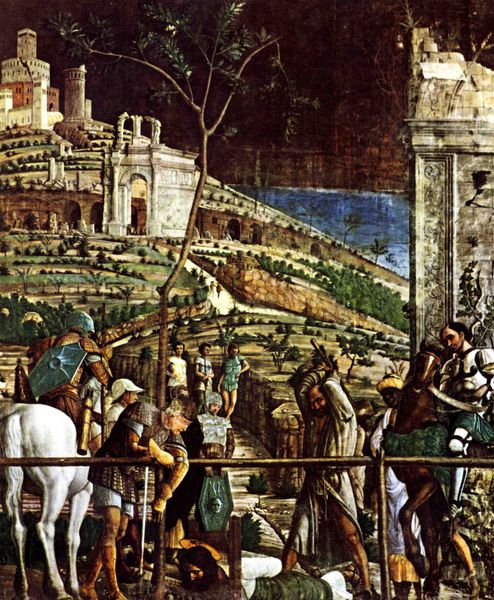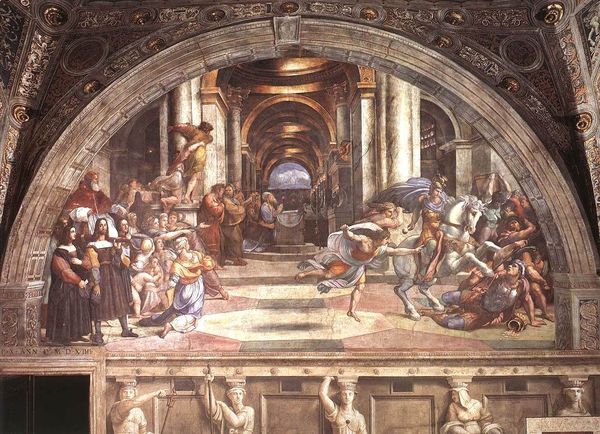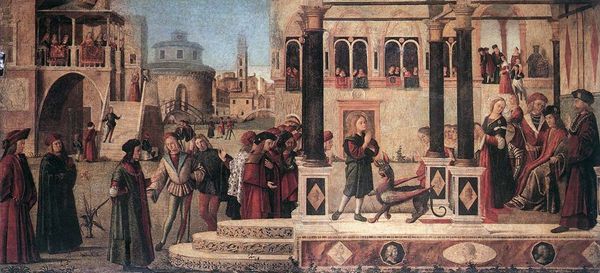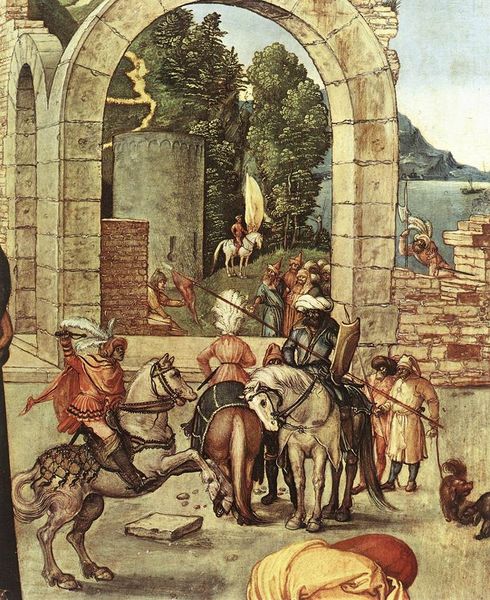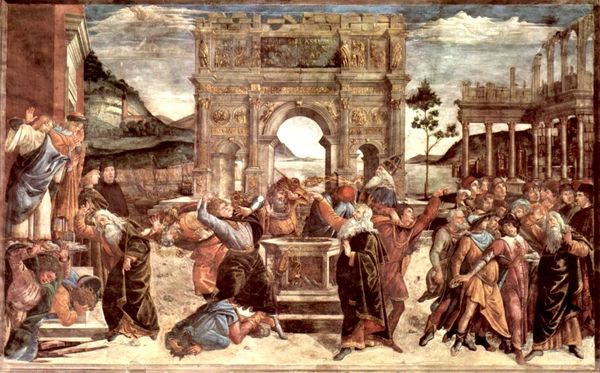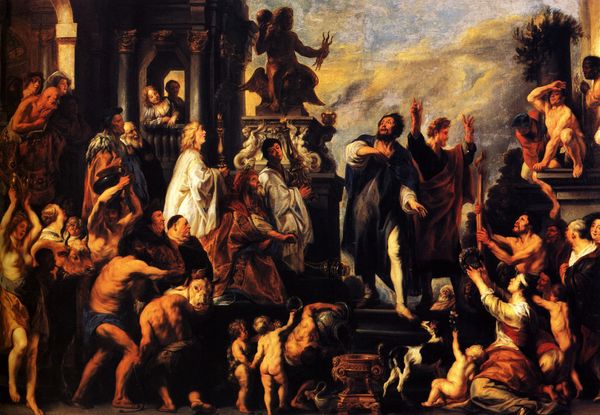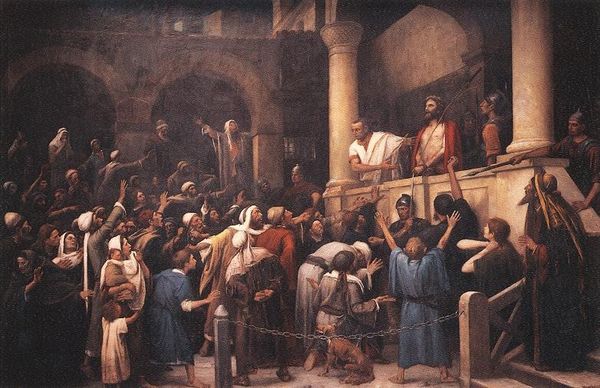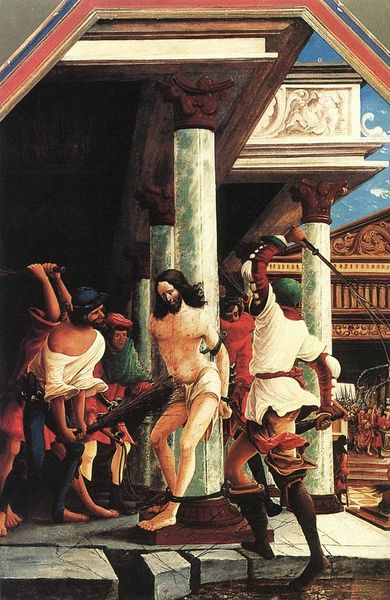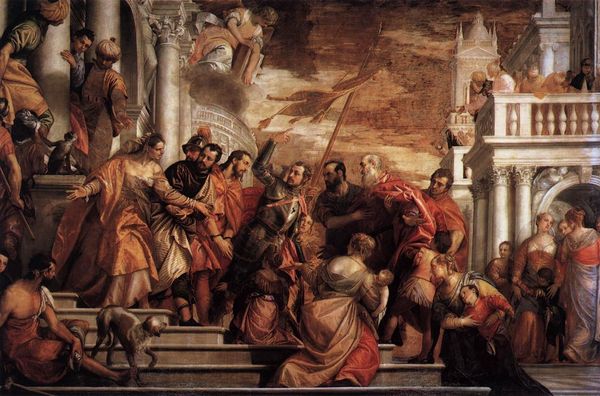
tempera, painting
#
narrative-art
#
tempera
#
painting
#
holy-places
#
perspective
#
figuration
#
christianity
#
cityscape
#
history-painting
#
italian-renaissance
Copyright: Public domain
Editor: Here we have Andrea Mantegna's "Saint James on the Way to his Execution," a tempera painting from around 1455. I am struck by the use of perspective to create depth in this urban setting. What stands out to you about its formal qualities? Curator: Notice the pronounced orthogonal lines converging towards a vanishing point, establishing spatial relationships, which in turn are complicated by the flatness of the figures in the foreground. Note also how the monumental architecture dwarfs the human figures. It amplifies the sense of the figures as occupying a space rather than interacting with one another. Editor: It's almost as if the city itself is the main character. How does the use of tempera contribute to this feeling? Curator: Tempera lends itself to a certain precision and clarity, a sharpness of detail, which Mantegna exploits fully. The pigments appear almost gem-like, enhancing the detailed rendering of the architectural elements and costumes. The meticulousness compels the viewer to scan, examine, to decode, and this sustains formal analysis. Do you find symbolic meaning in the subdued color palette? Editor: That’s a good question; perhaps it represents the somber tone of the painting’s subject, the imminent execution. Looking closer, there are subtle tonal variations that define the volumes. It’s a complex interaction. Curator: Precisely. The restricted palette highlights the careful arrangement of forms and the play of light and shadow, focusing the eye on the geometric framework underpinning the narrative. The overall composition reflects early Renaissance developments. Editor: I’ve certainly learned how the technique enhances the perspective in the picture. Curator: And I, too, have re-evaluated how detail informs a formal reading, noting especially that this painting lacks neither complexity, nor depth, when considered in those terms.
Comments
No comments
Be the first to comment and join the conversation on the ultimate creative platform.

